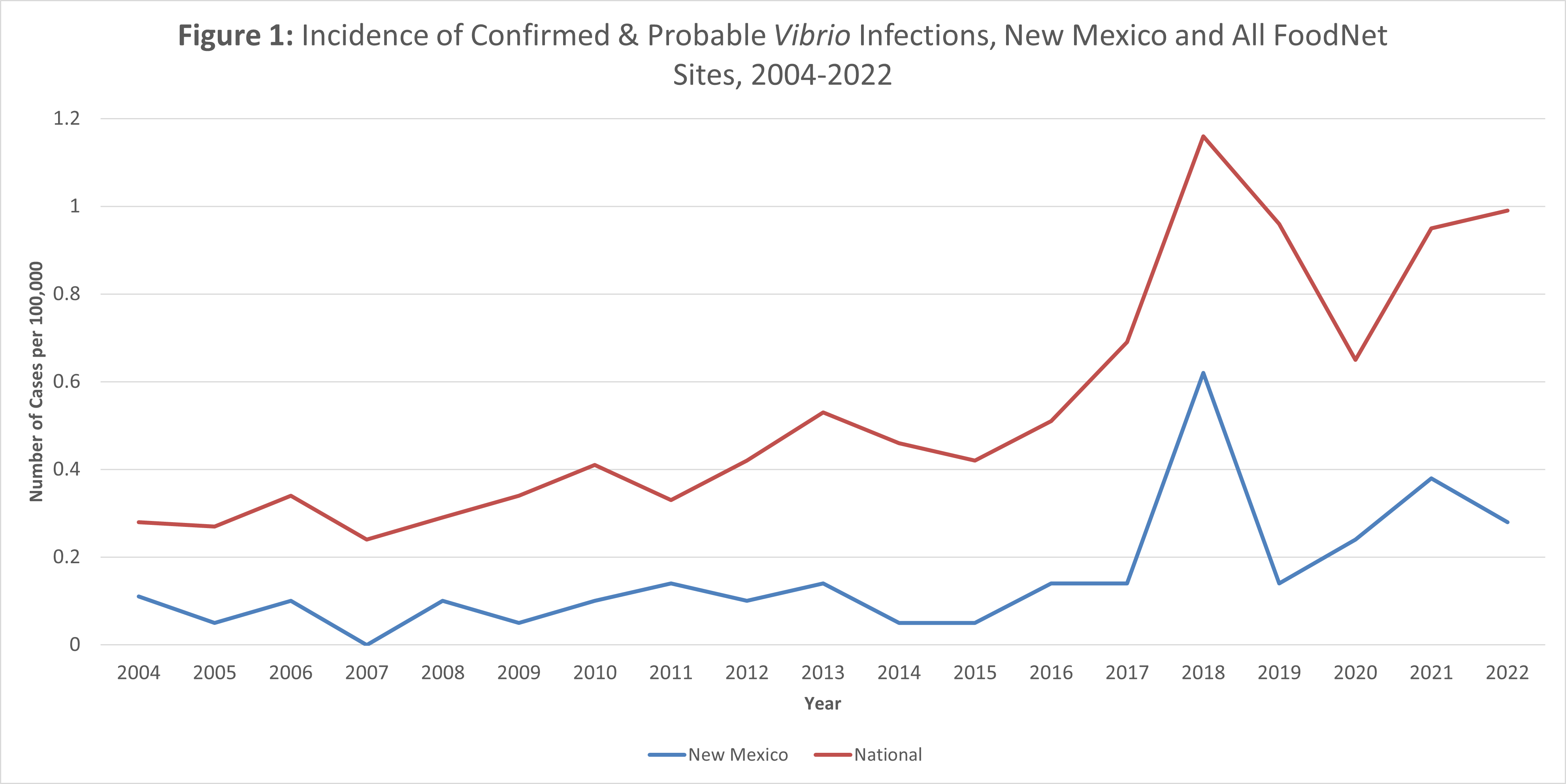Vibrio
Vibrio infections are caused by bacteria from the same family as those that cause cholera. Vibrio bacteria are commonly found in seawater, particularly in the warmer summer months. The two most common types are Vibrio parahaemolyticus, usually causing diarrheal disease, and Vibrio vulnificus, usually causing wound and bloodstream infections. Infection usually results from eating raw or undercooked shellfish or exposure of an open wound to seawater, particularly among immunocompromised persons.
Vibriosis is relatively rare in the United States. The Centers for Disease Control and Prevention estimates that 80,000 cases of vibriosis occur annually, while about 900 cases of V. vulnificus infection are reported each year. It should be noted, however, that vibriosis may be under-reported, as most laboratories rarely use the selective medium that is necessary to identify these organisms. Vibrio organisms are isolated from cultures of stool, wounds, and blood.
Vibrio Infection in New Mexico and the United States
Active, population-based surveillance for Vibrio has been conducted throughout New Mexico since 2004 as part of the New Mexico Emerging Infections Program (NMEIP) FoodNet system. Medical records for residents of New Mexico with Vibrio infections are reviewed for demographic and other epidemiologic information. Through this surveillance system New Mexico FoodNet is to examine and describe Vibrio infections in the state. Data from New Mexico and other EIP FoodNet sites are aggregated by the Centers for Disease Control and Prevention to generate national estimates.
In 2022, there were 6 cases of Vibrio infections identified in New Mexico. During that same time period, there were 504 cases reported from all 10 FoodNet sites.


